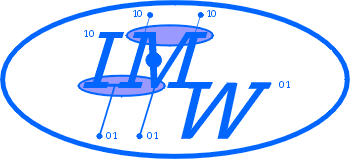INSTITUTE OF MATHEMATICAL ECONOMICS


Wulf Albers
Abstract
Starting point of the theory of prominence
is the observation that the selection of a numerical response is performed by a
process of stepwise refinement of a reasonable answer until the available
information does not permit a further specification. The procedure starts with a
sufficiently high number, and stepwise decides whether to add, subtract or not
use the next finer of the set of full step numbers for the presentation, where
the full step numbers are {a*10^i: a Î
{1,2,5}, i integer}.
The result is the presentation of a number as sum of full step numbers with
coefficients +1, -1, or 0, where every full step number is 'used' at most once. For instance
17=20-5+2, or 24=20+5-1. This presentation is not necessarily unique. Important
is the finest full step number used by a presentation. It is denoted as the
exactness of the presentation. The exactness of a number is the finest exactness
among all presentations of the number. It informs about the crudest level of
exactness on which the number can be perceived, i.e. constructed by a response
process. - Central tools for the analysis of numerical responses are two types
of scales. S(r,a)-scales are based on the observation that subjects adjust
relative exactness r, and absolute exactness a to a given type problem or
situation.
M(i,a)-scales are constructed by starting with the full step numbers,
and stepwise inserting the respective 'crudest number' as 'midpoint' between any
two neighboured numbers of the preceding scale. Accordingly one obtains scales
on the full step, half step, ... level. Both types of scales permit to define
perception functions by assuming that the distances of any two neighboured
numbers of a scale are equal, i. e. by applying usual interpolation principles.
Several lemmata concerning the structure of scales are given.

| walbers@wiwi.uni-bielefeld.de | ||||
| List of IMW Working Papers | Members of the IMW | |||
|
Last Update: Monday, 23-Nov-98 13:57:43 MET©
Michael Borgelt Sending to: 134.76.163.122, Index:1 |